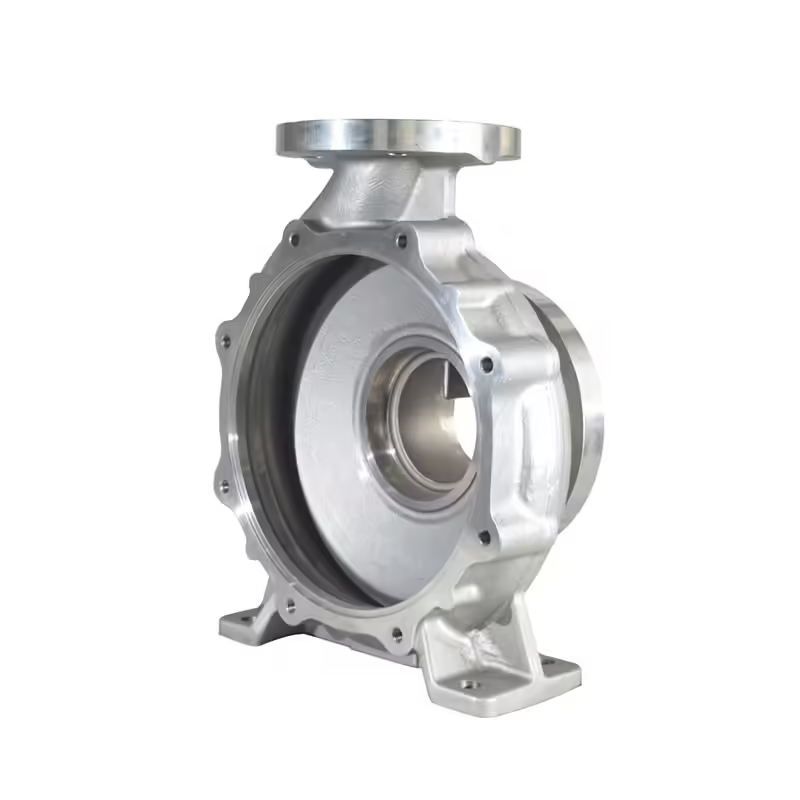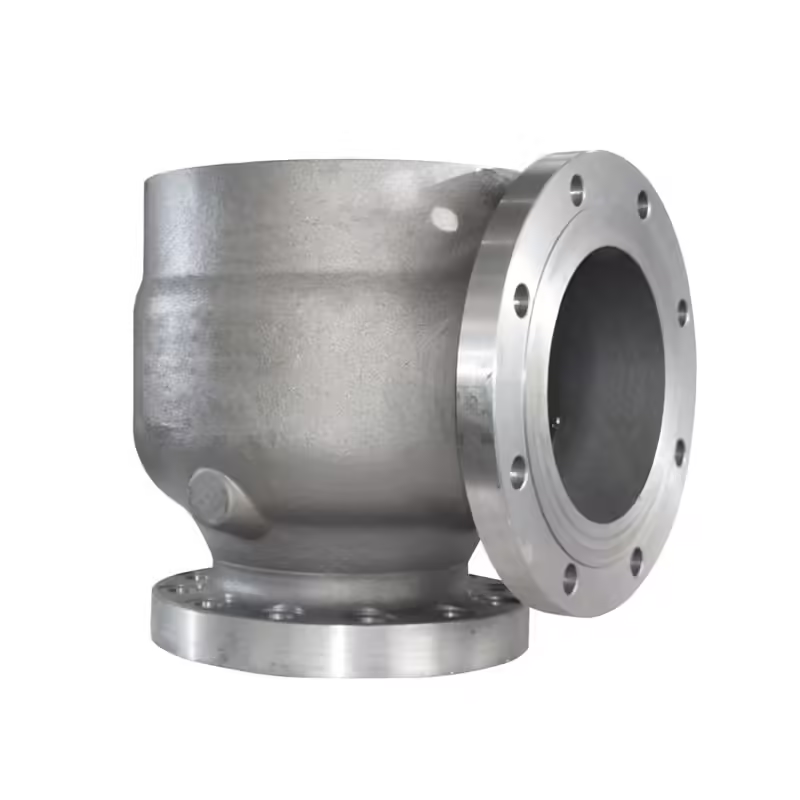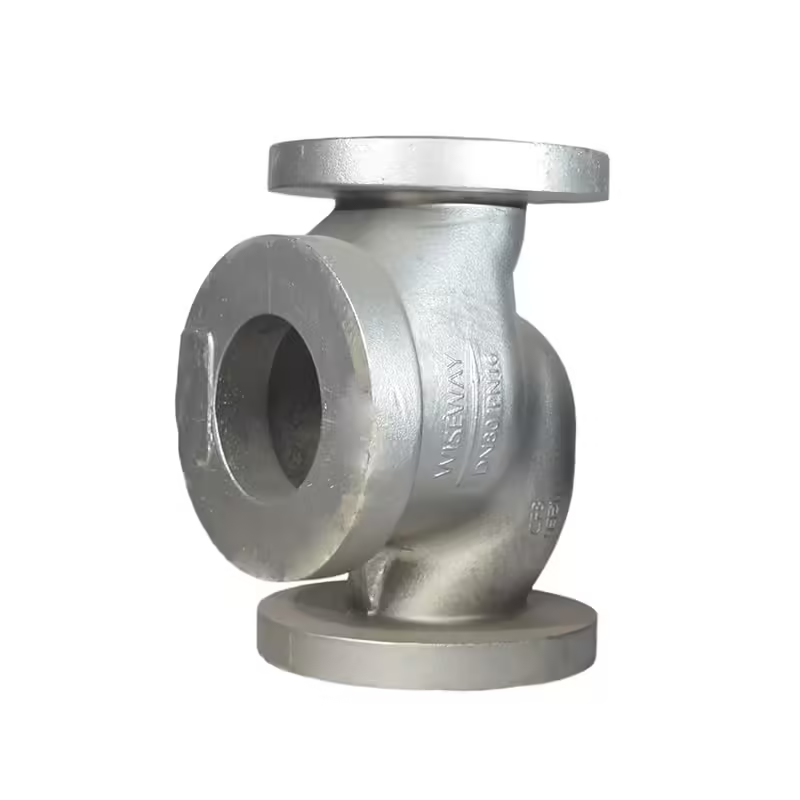The Ultimate Guide to Hastelloy Pipe Fittings: 6 Must-Know Tips
Selamat Datang ke Blog Saya!
I’m thrilled to have you here! Before we dive into the content, I’d love for you to join me on my social media platforms. It’s where I share extra insights, connect with our amazing community, and keep you updated on the latest news. Here’s how you can stay connected:
📘 Facebook: Shanghai Leierwo Industry Trade Co., Ltd.
Now, let’s embark on this journey together! I hope you find the content here not only insightful but also inspiring and valuable. Let’s get started!
Jadual Kandungan
pengenalan

Hastelloy pipe fittings represent a critical component in modern industrial systems where extreme operating conditions demand materials with exceptional performance characteristics. These specialized fittings, crafted from nickel-based superalloys, have become indispensable across multiple high-stakes industries due to their unparalleled resistance to corrosion, thermal stability, and mechanical durability.
The selection of appropriate piping components can make the difference between a system that operates reliably for decades and one that requires constant maintenance and premature replacement. In environments where standard stainless steel fittings would rapidly deteriorate – such as chemical processing plants handling concentrated acids, offshore oil platforms exposed to seawater corrosion, or power generation facilities dealing with high-temperature flue gases – hastelloy pipe fittings provide the necessary resilience to maintain operational integrity.
This comprehensive guide will explore six essential aspects of hastelloy pipe fittings in detail, providing engineers, plant managers, and procurement specialists with the technical knowledge needed to make informed material selection decisions. We’ll examine the metallurgical properties that give hastelloy its superior performance, compare different alloy grades and their specific applications, analyze cost-benefit considerations, and provide practical guidance on installation and maintenance best practices.
NO 1. Understanding Hastelloy Pipe Fittings: Composition and Properties
Metallurgical Fundamentals
Hastelloy pipe fittings derive their exceptional properties from a carefully engineered nickel-based alloy composition. The base nickel matrix is enhanced with strategic additions of molybdenum, chromium, and other elements to create materials capable of withstanding the most aggressive industrial environments.
The primary alloying elements and their functions include:
- Nickel (Ni): Provides the fundamental corrosion-resistant matrix and maintains ductility
- Molybdenum (Mo): Enhances resistance to pitting and crevice corrosion, particularly in chloride environments
- Chromium (Cr): Improves oxidation resistance at elevated temperatures
- Tungsten (W): Contributes to solid solution strengthening
- Iron (Fe): Present in controlled amounts to balance cost and performance
Key Performance Characteristics
Hastelloy pipe fittings exhibit several superior material properties compared to conventional stainless steels:
- Rintangan Kakisan
- Outstanding resistance to both oxidizing and reducing acids
- Exceptional performance in environments containing chlorides, fluorides, and other halides
- Low susceptibility to stress corrosion cracking
- Thermal Stability
- Maintains mechanical properties at temperatures up to 2000°F (1093°C)
- Excellent resistance to thermal fatigue
- Minimal thermal expansion compared to many other alloys
- Mechanical Properties
- High tensile and yield strength across a wide temperature range
- Good ductility and toughness, even at cryogenic temperatures
- Excellent fatigue resistance
- Fabrication Characteristics
- Good weldability using appropriate techniques
- Can be formed and machined with proper tooling
- Compatible with various joining methods
NO 2. Types of Hastelloy Pipe Fittings and Their Applications
The hastelloy family includes several distinct alloys, each optimized for specific service conditions. Understanding these variations is crucial for proper material selection.
Hastelloy C276 Pipe Fittings
As the most widely used grade, C276 offers balanced performance across numerous challenging environments:
Composition Highlights:
- 15-17% Molybdenum
- 4-7% Chromium
- 3-4.5% Tungsten
Key Applications:
- Chemical processing equipment handling sulfuric, hydrochloric, and phosphoric acids
- Pollution control systems in power plants
- Pharmaceutical manufacturing equipment
- Marine and offshore oil & gas components
Performance Advantages:
- Resists pitting and crevice corrosion in seawater
- Maintains strength in both oxidizing and reducing conditions
- Excellent resistance to chloride-induced stress corrosion cracking
Hastelloy B2 Pipe Fittings
Optimized for extremely reducing environments, B2 demonstrates exceptional resistance to non-oxidizing acids:
Composition Highlights:
- 26-30% Molybdenum
- Low Chromium content (<1%)
Key Applications:
- Hydrochloric acid handling systems
- Sulfuric acid concentration and processing
- Acetic acid production equipment
Performance Considerations:
- Not suitable for oxidizing conditions
- Requires post-weld heat treatment to maintain corrosion resistance
- More challenging to fabricate than C276
Hastelloy X Pipe Fittings
Designed for high-temperature service, X alloy combines oxidation resistance with creep strength:
Composition Highlights:
- 8-10% Molybdenum
- 20-23% Chromium
- 0.5-2.5% Cobalt
Key Applications:
- Gas turbine combustion components
- Industrial furnace hardware
- Aerospace exhaust systems
Performance Advantages:
- Outstanding oxidation resistance up to 2200°F (1204°C)
- Good creep-rupture strength
- Maintains ductility after prolonged high-temperature exposure
NO 3. Critical Applications of Hastelloy Pipe Fittings
Hastelloy pipe fittings serve vital roles across multiple industries where conventional materials would fail prematurely. Their application spans numerous critical systems:
Chemical Processing Industry
In chemical manufacturing, hastelloy pipe fittings provide reliable service in:
- Reactor feed and discharge systems
- Heat exchanger networks
- Distillation column piping
- Acid storage and transfer systems
Case Study: A major sulfuric acid producer replaced 316L stainless steel pipe fittings with hastelloy C276 in their concentration unit, extending service life from 6 months to over 5 years while eliminating unplanned downtime.
Oil & Gas Production
Offshore and sour service applications benefit from hastelloy’s resistance to:
- Seawater corrosion
- Hydrogen sulfide (H₂S) cracking
- CO₂-induced corrosion
Typical installations include:
- Subsea production systems
- Wellhead components
- Gas processing equipment
Power Generation
Hastelloy pipe fittings are essential in:
- Flue gas desulfurization (FGD) systems
- Waste-to-energy plants
- Nuclear power plant auxiliary systems
Pharmaceutical and Food Processing
The non-contaminating properties of hastelloy make it ideal for:
- Ultra-pure water systems
- Sterile processing equipment
- CIP (clean-in-place) systems
NO 4. Comparative Analysis: Hastelloy vs. Stainless Steel Pipe Fittings
To fully appreciate the value proposition of hastelloy pipe fittings, a detailed comparison with standard stainless steel alternatives is essential.
| Property | Hastelloy C276 | 316 Stainless Steel | Super Duplex Stainless |
|---|---|---|---|
| Rintangan Kakisan | Cemerlang | bagus | Very Good |
| Max Temp (°F/°C) | 2000/1093 | 1500/816 | 600/316 |
| Chloride Resistance | Outstanding | Sederhana | Cemerlang |
| Acid Resistance | Exceptional | Limited | bagus |
| Initial Cost | tinggi | rendah | Medium |
| Lifecycle Cost | rendah | tinggi | Medium |
| Weldability | Challenging | Easy | Difficult |
| Availability | Limited | Cemerlang | bagus |
Key Takeaways:
- Hastelloy provides superior performance in extreme conditions but at a higher initial cost
- Stainless steels may be more economical for mild environments
- Super duplex offers a middle ground but with temperature limitations
- Total cost of ownership often favors hastelloy in aggressive service
NO 5. Installation and Maintenance Best Practices

Proper handling and installation are critical to realizing the full performance potential of hastelloy pipe fittings.
Fabrication Guidelines
Cutting and Machining:
- Use carbide or cobalt tooling
- Maintain low cutting speeds
- Employ ample coolant to prevent work hardening
Forming Operations:
- Cold forming preferred for thin sections
- Hot forming may be required for heavy walls
- Annealing between forming stages for severe deformation
Welding Procedures
Hastelloy pipe fittings require specialized welding approaches:
Recommended Processes:
- Gas Tungsten Arc Welding (GTAW/TIG)
- Shielded Metal Arc Welding (SMAW) with matching electrodes
Critical Parameters:
- Maintain low heat input
- Use high purity shielding gases
- Employ backing gas for root protection
Post-Weld Treatment:
- Solution annealing may be required for some grades
- Pickling to restore corrosion resistance
- Passivation for optimal surface condition
Maintenance Protocols
Effective maintenance ensures long-term performance:
Inspection Intervals:
- Quarterly in severe service
- Biannually in moderate conditions
Key Inspection Points:
- Erosion/corrosion at flow disturbances
- Crevice corrosion under deposits
- Stress corrosion cracking in high-tension areas
Cleaning Procedures:
- Mechanical cleaning with non-metallic tools
- Chemical cleaning with inhibited acids
- High-pressure water jetting
NO 6. Cost-Benefit Analysis and Procurement Considerations

While hastelloy pipe fittings command premium pricing, their value proposition becomes clear through lifecycle analysis.
Cost Drivers
- Alloy Content: Nickel and molybdenum market prices significantly impact material cost
- Manufacturing Complexity: Specialized production processes increase fabrication expenses
- Quality Certifications: Nuclear-grade or aerospace-qualified materials cost more
- Lead Times: Limited production capacity can extend delivery schedules
Total Cost of Ownership Factors
- Reduced maintenance requirements
- Extended service intervals
- Elimination of unplanned downtime
- Lower inventory costs for spares
Sourcing Strategies
- Establish long-term supplier relationships
- Consider bulk purchasing for large projects
- Evaluate alternative grades for non-critical applications
- Implement quality verification protocols
Kesimpulan
Hastelloy pipe fittings represent the pinnacle of corrosion-resistant piping technology, offering unmatched performance in the most demanding industrial environments. While their initial cost exceeds conventional stainless steel alternatives, their superior durability and reliability often make them the most economical choice over the complete lifecycle of industrial systems.
By understanding the specific alloy grades, their optimal applications, proper installation techniques, and maintenance requirements, engineering professionals can make informed decisions that maximize system reliability while minimizing total cost of ownership. As industrial processes continue to push the boundaries of temperature, pressure, and corrosion challenges, hastelloy pipe fittings will remain an essential component in maintaining operational integrity across critical industries.
Soalan Lazim
What makes hastelloy pipe fittings more corrosion-resistant than stainless steel?
Hastelloy pipe fittings offer superior corrosion resistance compared to stainless steel due to their unique nickel-based alloy composition, which includes significant amounts of molybdenum and chromium. While stainless steel relies on a passive chromium oxide layer for protection, hastelloy’s high nickel content provides inherent resistance to both oxidizing and reducing environments, and the added molybdenum enhances protection against localized corrosion like pitting and crevice attack, particularly in chloride-rich conditions. This makes hastelloy pipe fittings ideal for handling aggressive acids, seawater, and other harsh chemicals where standard stainless steel would rapidly deteriorate.
Can hastelloy pipe fittings be used in cryogenic applications?
Yes, hastelloy pipe fittings perform exceptionally well in cryogenic applications due to their nickel-rich matrix, which maintains excellent toughness and ductility even at extremely low temperatures. Grades like Hastelloy C276 are commonly used in LNG systems, liquid nitrogen handling, and other cryogenic processes where temperatures can reach as low as -260°F (-162°C). Unlike ferritic materials that become brittle in cold environments, hastelloy alloys retain their mechanical properties, making them a reliable choice for low-temperature piping systems.
How do I select the right hastelloy grade for my application?
Selecting the appropriate hastelloy grade depends on several factors, including the specific chemicals involved, operating temperatures, mechanical stress requirements, and whether the environment is oxidizing or reducing. Hastelloy C276 is the most versatile choice for general corrosive conditions, while Hastelloy B2 excels in reducing acids like hydrochloric and sulfuric acid. For high-temperature applications, Hastelloy X offers superior oxidation resistance. Consulting with a materials engineer or corrosion specialist is recommended for critical applications to ensure optimal performance and cost-effectiveness.
What are the most common failure modes for hastelloy pipe fittings?
Although hastelloy pipe fittings are highly durable, potential failure modes include improper welding leading to localized corrosion, galvanic corrosion when connected to less noble metals, thermal fatigue in cyclic temperature applications, and erosion-corrosion in high-velocity slurry systems. Ensuring proper fabrication techniques, avoiding contamination during welding, and selecting compatible materials for system components can mitigate these risks and extend the service life of hastelloy pipe fittings.
How does the thermal expansion of hastelloy compare to other materials?
Hastelloy alloys have a moderate coefficient of thermal expansion, falling between austenitic stainless steels and carbon steel. For example, Hastelloy C276 has a thermal expansion rate of 6.2 µin/in-°F (11.2 µm/m-°C), compared to 9.6 µin/in-°F (17.3 µm/m-°C) for 316 stainless steel and 7.3 µin/in-°F (13.1 µm/m-°C) for carbon steel. This intermediate expansion rate simplifies system design when integrating hastelloy pipe fittings with other materials, reducing the risk of thermal stress-related failures in piping networks.
Kategori Produk
- Bahagian Injap
- Bahagian Pam Air
- Bahagian Kotak Galas
- Bahagian Die Casting
- Produk Pam Keluli Tahan Karat
- Produk Pam Besi Tuang
- Bahagian Injap Untuk Kegunaan Kereta
- Bahagian Kenderaan
- Bahagian Injap Untuk Kegunaan Awam
- Bahagian Pam Vakum KF



